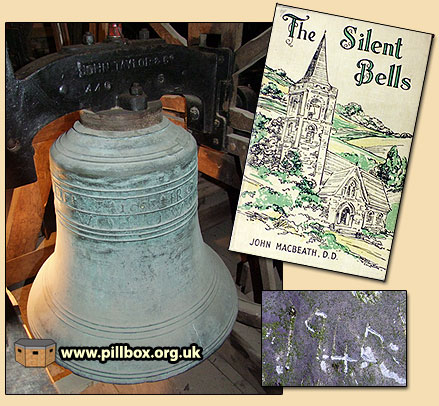Invasion signals
Posted: 6 June 2012 19:54
I attended the firing of a beacon on Mount Harry, near Lewes, on June 4th. Nowadays, such events only happen as part of public celebrations, but there was a time when beacons and their later equivalents carried a dark message.
Fire was, of course, a quick visual means of conveying long distance the message that an invasion was underway.
The firing of the beacon was part of the Diamond Jubilee celebrations; fortunately the rain held off for the crowd that had gathered up on the Downs as the moon rose in the late evening.
If the name Mount Harry seems familiar to you, it became a defended locality in 1940 and I located some slit trenches here in 2009; an appropriate location given the invasion warning origins of beacons.
I don't know off-hand if there actually was a beacon here during the Spanish Armada threat of 1588 or during the Napoleonic invasion scare of 1803-05, but there are local place names such as Beacon Hill (Rottingdean), Firle Beacon, Ditchling Beacon and Crowborough Beacon. I've certainly seen many of these modern structures on my travels: Bexhill, Winchelsea and Fairlight are just three I can recall; they date back to the Golden Jubilee of 2002.
Let's move to 1940 and a period on which I can comment.

Enemy landings on the coast were to be signalled by the firing of Golden Rain rockets; this was an SOS call for artillery to bring immediate fire to bear on the beach from which the flares came.
John MacBeath wrote in his book The Silent Bells (c1941) "..the bells are now silent until they ring as Warning Bells of enemy invasion or Joy Bells of Victory..."
Church bells were to be used to call out the Home Guard to deal with the threat of German paratroops or gliders landing.
The bell seen at right is in a Sussex church tower upon which a Home Guard observation post was established following a false report of a parachutist landing in a neighbouring town in 1940.
A close inspection of the roof on the tower revealed where persons unknown took time to inscribe '1940' in the lead for posterity.
MacBeath anticipates the celebratory use of church bells, but the nation didn't have to wait until 1945 to hear them; Churchill ordered that they be rung to celebrate the Allied victory at El Alamein in November 1942.
Archive documents reveal correspondence between the Archbishop of Canterbury, Churchill and GHQ Home Forces on the subject of relaxing the ban of bell-ringing on Christmas Day 1942. The Archbishop had been pressing Churchill for bells to again be used at certain times on Sundays since 1940, but had been thwarted by GHQ who feared that such occasional use would cause confusion in the event of a real emergency.
Back to 2012, and our beacon was nearing its firing time of 10:15. Out of the darkness on a distant hillside came the glow of the neighbouring beacon, and then a flaming torch was held aloft and the fire took hold of the brazier basket.
A poignant singing of the National Anthem had me wondering whether those previously charged with signalling invasion in days gone by might have also raised their voices in patriotic defiance of the threat that faced them.
On a hillside a few miles distant, another sinister orange glow became apparent, showing that the message was being passed on...
- Pete

Email:
Blog Latest

Bishopstone reveals its pillbox secrets
18 October 2021

Pillbox or Observation Post?
10 June 2020

Uncovering the hidden secrets of a pillbox
8 June 2019

Review of 2018
31 December 2018

Wartime Christmas in East Sussex (2)
24 December 2018
Jargon-buster
Defended locality
An area defended by a force (e.g. a platoon) occupying a series of defence works, normally within a barbed wire perimeter. Localities were designed for all-round defence and usually fitted in with a coordinated scheme of neighbouring localities.
Slit trench
Small, narrow trench designed to provide protection against shrapnel and other battlefield hazards. Technically distinct from a weapon pit (which was intended soley as a defensive position) slit trenches were also used as defence works.
This site is copyright © Peter Hibbs 2006 - 2024. All rights reserved.
Hibbs, Peter Invasion signals (2024) Available at: http://pillbox.org.uk/blog/216700/ Accessed: 27 July 2024
The information on this website is intended solely to describe the ongoing research activity of The Defence of East Sussex Project; it is not comprehensive or properly presented. It is therefore NOT suitable as a basis for producing derivative works or surveys!